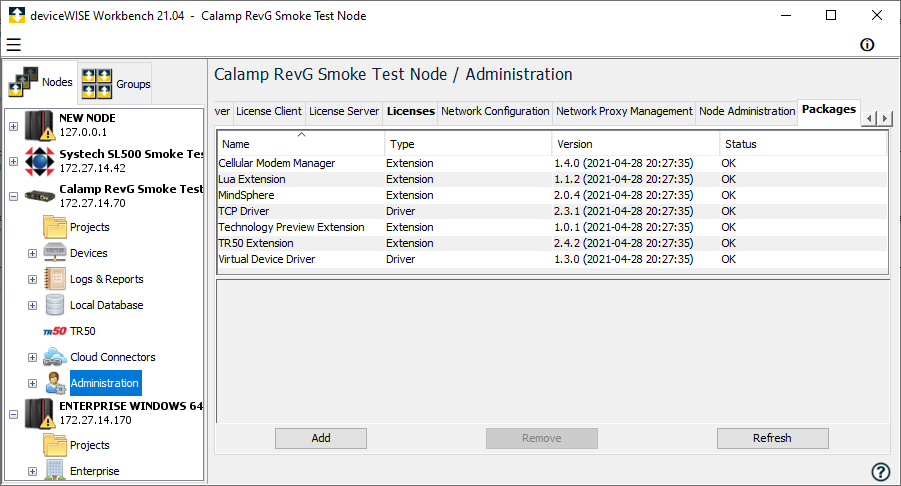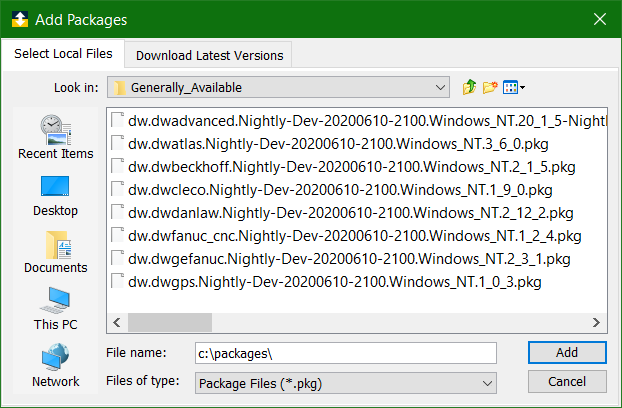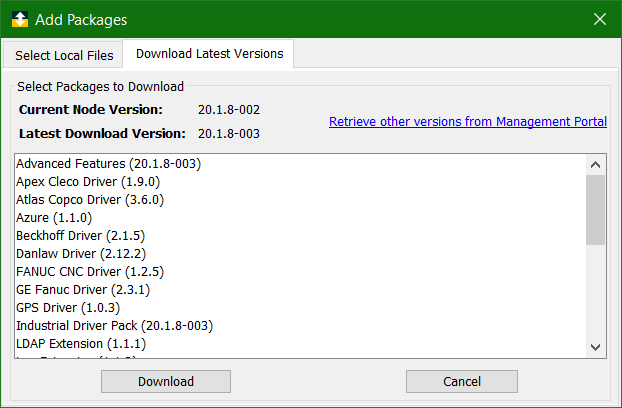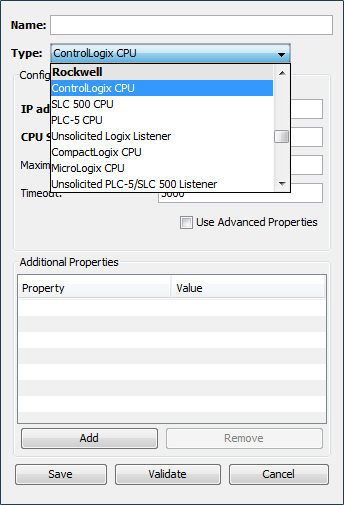The Packages panel is used to add device drivers and other types of product extensions. Some packages are installed as part of the base software installation and some packages must be added after the base software is installed.
When a package is installed
on a node, the name and type of the package appears in
the list of packages on the panel.
The Packages panel has a table format with
columns that provide the package name, type, version, and status. When a row is selected, additional
information appears at the bottom of the panel.
Adding packages
From the Packages panel, it is possible to add packages to the node. To add a packages, follow these steps:
- From the Workbench left pane, expand the node where
you want to add the package.
- Click Administration .
The Administration window appears. - Click Packages to bring the panel
to the front.
The Packages panel displays all packages that are currently installed on the node. - Click Add at the bottom of the panel to open the selection dialog.
- Click Select Local Files tab to select the local packages

- Click Download Latest Versions tab to get the latest package versions from the web.
This will allow you to download the packages locally and install them.
If you need a version other than the latest, click the link to login to the deviceWISE Cloud. For more information on downloading version from deviceWISE Cloud, see the next section.

Once you've selected the packages to install, you will be prompted with information on the package and asked to proceed. - Click Download.
The package will be copied to the node and installed, and then the runtime will be automatically restarted. If there is any problem with the automatic restart of the runtime, you will have to manually restart the components.
Obtaining older or non-generally available packages
Other packages are available on the Management Portall.
You must have a portal user ID and password to login to the Management Portal.
If you need a Management Portal account, see Creating the deviceWISE Cloud account.
To download a package from the Management Portal, follow these steps:
- Log on to the Management Portall, and then click Developer >> Resources.
- From under Index of files,
click the appropriate build that matches the
version of the runtime installed on your node.
It is important that the version of the package is one that is supported on the runtime version installed on your node.
If there are any questions, contact your sales representative. - Select the appropriate product platform, for
example OS_Windows. If there is a
32bit or 64bit directory, select the one that matches
your deviceWISE runtime product.
- Select Packages.
- Select Generally_Available,
Pilot_Ready, or
Technology_Preview for the list of the various
packages for that product platform.
- Select the appropriate file and download it to a temporary location.
Removing packages
From the Packages panel, you can remove a package.
Select the desired package and then select the Remove button. You will be asked for confirmation of this action.
Platform limitations when adding or removing packages
On some platforms with limited operating system resources for memory or disk (persistence storage), there may be failure when attempting to add or remove packages. These failures are the result of the limited system resources and possible runtime behavior such as memory fragmentation. When these failures occur, restarting the node at the operating system level (power off then power on) may then allow the package add or remove to succeed. In other scenarios, you may have reached a platform limit based on the application definitions, the number and size of packages added and other dynamic runtime requirements.
Manually restarting a node
To manually restart a node, use an option that applies to the operating environment as follows:
Using the Workbench:
- From the Workbench left pane, expand the node you want to restart.
- Select Administration, and then select the Node Administration tab.
- From the the bottom of the panel, select
Restart.
A Restart window appears. - Select Restart Runtime.
Using Windows directly:
- From the Start menu, select All Programs ->deviceWISE ->Runtime, and then select Stop deviceWISE Core.
- From the Start menu, select All Programs ->deviceWISE ->Runtime, and then select Start deviceWISE Core.
Using AIX or Linux directly (as root):
- From the command line, type /opt/dw/devicewise restart (and the press Enter).
Using Enterprise Gateway for Siemens EPRC and Mitsubishi MESInterface IT nodes:
- Toggle the RESET switch on the node or power off then power on the rack where the node is located.
You will know that a device driver package was installed
successfully (assuming any required licenses were added)
because you will see the corresponding device types listed
in the Device window for a device driver or the
corresponding features for the extension. For
example:
Node processing of software update packages using the Workbench Packages panel
In addition to using a SUP file in a Campaigns
defined and started in the IoT Portal, a node can have a
SUP file applied to it by using the Workbench ->
Administration -> Packages panel.
When using the Workbench -> Administration ->
Packages panel, Add function, change the
Files of type parameter from the default
Package Files (*.pkg) to Software
Update Package Files (*.sup), to be able to browse
for your SUP output files.
This processing of the SUP file by the node is similar to its processing when it is initiated in a Campaign. The main difference is that the completion status is not reflected in the IoT Portal in a Campaign's status.
Adding a license for the package
Depending on the package installed, you may need to add a license to activate the features. For more information, see Licenses.